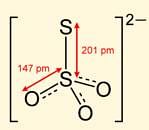Test: Oxidation Number (13 August) - JEE MCQ
10 Questions MCQ Test - Test: Oxidation Number (13 August)
Direction (Q. Nos. 1-12) This section contains 12 multiple-choice questions. Each question has four
choices (a), (b), (c) and (d), out of which ONLY ONE option is correct.
Consider the following reactions.
I. Zn + dil. H2So4 → ZnSO4 + H2
II. Zn + conc. H2SO4 → ZnSO4 + SO4 + H2O
III. Zn + HNO3 → Zn(NO3)2 + H2O + NH4NO3
Q. Oxidation number of H changes in:
choices (a), (b), (c) and (d), out of which ONLY ONE option is correct.
I. Zn + dil. H2So4 → ZnSO4 + H2
II. Zn + conc. H2SO4 → ZnSO4 + SO4 + H2O
III. Zn + HNO3 → Zn(NO3)2 + H2O + NH4NO3
In which of the following set of compounds oxidation number of oxygen is not (- 2)?
| 1 Crore+ students have signed up on EduRev. Have you? Download the App |
Which of the following is not an example of redox reaction?
The oxidation number of P in Ba(H2PO2)2, Ba(H2PO3)2 and Ba(H2PO4)2 are respectively
In which of the following reactions oxidation number of chromium has been affected?
In the following reaction, , oxidation number of
Direction (Q. Nos. 13 and 14) This section contains 2 multiple choice questions. Each question has four choices (a), (b), (c) and (d), out of which ONE or MORE THANT ONE is correct.
Q. Which of the following species has/have oxidation number of the metal as + 6 ?
Oxidation numbers of P in PO4−3, of S in SO42− and that of Cr in Cr2O72− are respectively,
The complex [Fe(H2O)5NO]2+ is formed in the ring-test for nitrate ion when freshly prepared FeSO4 solution is added to aqueous solution of
followed by the addition of conc. H2SO4. NO exists as NO+ (nitrosyl).
Q. Magnetic moment of Fe in the ring is
Direction (Q. Nos. 18 and 19) This section contains 2 questions. when worked out will result in an integer from 0 to 9 (both inclusive)
Q. S2O32- has two types of sulphur atoms. What is the difference in the oxidation states of two types of sulphur atoms?


















